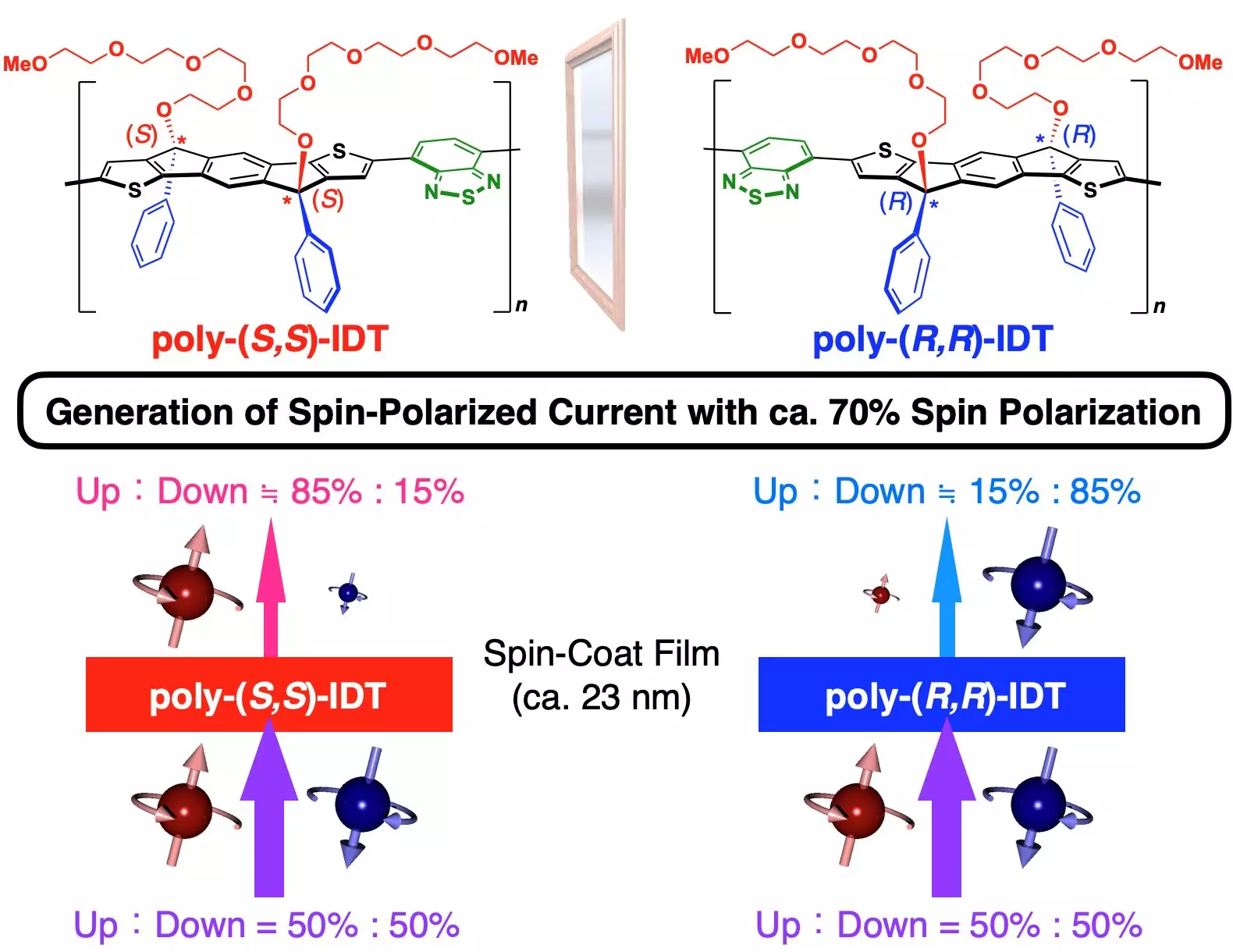Chirality, a property inherent to molecules, denotes the existence of non-superimposable mirror images akin to left and right hands. This characteristic plays a pivotal role in how molecules interact with light and electrical currents. When examining chiral molecules, we uncover their unique abilities to influence the behavior of currents, particularly in burgeoning fields like spintronics. This intriguing phenomenon, known as chirality-induced spin selectivity (CISS), is at the forefront of research aimed at enhancing electronic device performance by exploiting spin-polarized currents.
Researchers at Osaka University have made significant strides in the synthesis of chiral copolymer films that exhibit remarkable spin polarization. Their innovative approach revolves around the use of chiral indacenodithiophene (IDT) derivatives as monomers in the creation of copolymers. This meticulous design allows these copolymers to incorporate chirality into their structural framework, which is instrumental in achieving CISS. By utilizing advanced techniques, like atomic force microscopy, the team evaluated the spin polarization capabilities of their films, uncovering their potential as effective spin filters—devices that react uniquely to varied current polarizations.
Spin polarization serves as a crucial measure of CISS effectiveness, indicating how well the copolymer films can differentiate between spin-up and spin-down currents. Through meticulous experimentation, the research team achieved a remarkable spin polarization of nearly 70%, establishing these IDT copolymer films among the frontrunners in this field. Such a high degree of polarization showcases the potential of these materials to enhance the functionality of spintronic devices.
The implications of this research are extensive, particularly in the context of practical applications. The manufacturing process of these IDT copolymer films is notably simpler than previous methodologies, which often involved intricate preparations. This ease of fabrication positions them favorably for integration into commercial spintronic devices. As the demand for innovative electronic components evolves, the ability to produce high-quality films efficiently will be a significant asset.
Furthermore, the application of these materials in clean energy technologies underscores their versatility. The potential for IDT copolymers to harness spin-polarized currents may lead to breakthroughs in energy-efficient electronics. As the field of spintronics continues to evolve, researchers are optimistic about the role of these chiral materials not only in advancing electronic performance but also in contributing to sustainable technological solutions.
The pioneering work by the Osaka University research team highlights the exciting possibilities that chiral copolymer films offer in the realm of spintronics. With their substantial spin polarization and practical ease of fabrication, these materials are poised to make a significant impact in both electronic and clean energy sectors. As research continues to unfold, the intersection of chirality and electronic materials promises a future ripe with innovation.


Leave a Reply